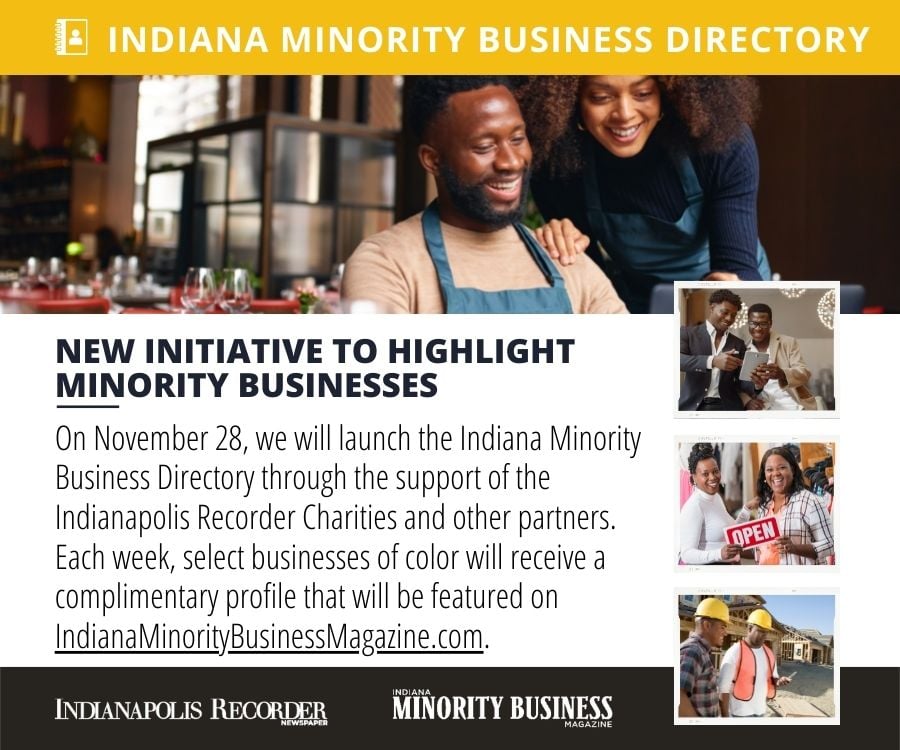The new year is a time to reflect, take a fresh look at life and commit to change. In my first monthly column for the Recorder, I’d like to touch on some major challenges we face as a community and suggest a few resolutions for making 2016 a year of progress.
Let’s start by being real about our problems:
Census data tells us that more people in Marion County are living in poverty than ever before. More than 190,000 of our neighbors are classified as poor, including one of every three African-Americans. The city’s poverty rate has more than doubled since 2000. Unemployment is down, but so are wages — we’re working harder, earning less.
Higher poverty breeds crime and increases demand for other services. As citizens, we expect safe streets and basic necessities for those in need, but city finances are stretched to the breaking point. Half of Indianapolis’ budget comes from income tax collections, so smaller paychecks for workers mean less revenue for police, education and public works.
This turmoil is bad for business, too. Employers in Indianapolis struggle to find qualified workers; applicants with advanced skills (in manufacturing, for example) and backgrounds in technology and science are in high demand. But even in retail and customer service positions, companies report a shortage of job-ready employees. And of course, high poverty rates mean fewer paying customers.
I don’t propose to offer a comprehensive strategy for solving the city’s woes in a few hundred words, but I’ll offer one suggestion each for residents, employers and elected officials to pursue before we say goodbye to 2016:
For the unemployed or underemployed — boost your earning power by boosting your skills.
Education and marketable skills increase employment and earning potential. A high school diploma isn’t a ticket to the middle-class in today’s economy; most new jobs require some post-secondary training. College graduates earn an average of $1 million more over their lifetimes than those without a degree, with half the risk of unemployment.
A two-year program or advanced vocational certificate can also open a wealth of “middle-skill” job opportunities, especially here in central Indiana, where most “old-school” manufacturing jobs have been replaced by more technically demanding positions.
It’s commonplace to have started college but not finished. An estimated one in five adult Hoosiers have some higher education but no degree. The Indiana Commission on Higher Education is launching a new campaign to encourage this group to finish their studies, working with universities to offer financial incentives, flexible schedules and other perks to help returning learners.
Whatever your situation, find a way to invest in yourself in 2016. Poverty is a complex issue, but one thing is clear: education equals opportunity and upward mobility.
For employers — build a smarter workplace by embracing diversity.
On the other side of the equation, local companies must broaden their hiring horizons, too. By making a diverse workforce a priority, employers can do the right thing for the community and their businesses. Looking beyond the traditional recruiting tactics to reach underrepresented groups is worth the effort, as firms find up-and-coming talent.
Diversity also makes the entire enterprise more productive and innovative; bringing together people from different backgrounds with unique perspectives challenges all employees to examine their assumptions, think differently and create an environment that encourages new ideas and solutions.
Recent studies by academics at Columbia University and the University of Texas confirmed this, running a series of experiments where more diverse teams consistently outperformed others in business analysis and problem solving. Research at the Massachusetts Institute of Technology/Carnegie Mellon showed similar value with gender diversity.
As more local companies embrace this reality, they’ll find success and create even more jobs and opportunities and chip away at the stubborn poverty within Indy’s minority workforce.
For city leaders — create more taxpayers by helping people get to work.
Local officials have a long list of issues and policy priorities to tackle in the year ahead. I’ll mention an obvious one: a dependable mass transit system that connects willing workers to available jobs. Many Indianapolis residents trying to better their economic plight find themselves limited by lack of reliable transportation to reach employment downtown or in the suburbs, or get to class if they choose to go back to school.
Indy’s lack of robust regional transit puts the city at a competitive disadvantage and turns many urban neighborhoods into islands of poverty with limited access to jobs, healthy food options and other needs. 2016 could finally be the year local voters have the chance to make their voices heard on an expanded public transportation system worthy of the nation’s 14th-largest city.
Issues like education, workplace diversity and transit will continue to make headlines as we continue into this new year. My goal with this column will be putting these and other “big picture” topics in real-world context — I’ll write about career strategies, conflict and cooperation on the job and how business trends impact our community. I look forward to sharing and hearing your thoughts.
Charlotte Westerhaus-Renfrow is a clinical assistant professor for negotiations and business law at the IU Kelley School of Business Indianapolis. Learn more at iupui.kelley.edu.



